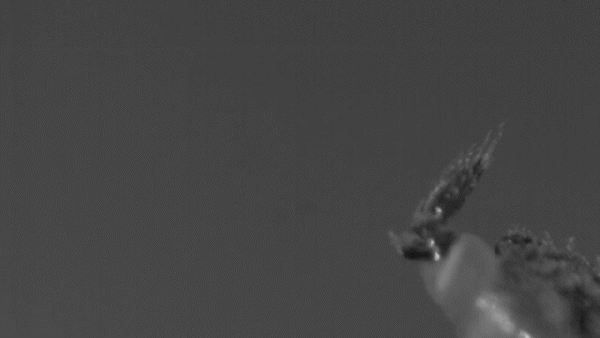biomimicry
This Desert Plant's Salty 'Sweat' Can Collect Water From the Air
The athel tamarisk's hydration trick could improve on human techniques to harvest water in dry environments, researchers say
How Kingfishers Dive Head-First Into Water Without Getting Concussions
Thanks to a new genetic analysis of 30 kingfisher species, researchers are one step closer to understanding the birds' dramatic hunting style
New Patch Inspired by Octopus Suckers Could Deliver Drugs Without Needles
Medicine-filled suction cups attached to the inside of the cheek could be an effective alternative to oral tablets or injections, study finds
Scientists Reveal Why Asp Caterpillar Stings Are So Excruciatingly Painful
A toxin in the insect's venom, which can punch a hole in cell walls, could inspire new drug-delivery methods in humans
Monarch Butterflies’ Signature White Spots May Help Them Fly
These long-distance migrants could get a boost from their striking coloration, which may reduce drag by heating and cooling air unevenly
These Tiny Bugs Urinate by Flinging Droplets of Pee
Sharpshooters are the first example of “superpropulsion” in a living organism, according to new research
Page 1 of 1
:focal(400x267:401x268)/https://tf-cmsv2-smithsonianmag-media.s3.amazonaws.com/filer_public/90/f0/90f03417-877a-48d3-8828-36f0515a4987/nyu-abu-dhabi-research-1_resize.jpg)
:focal(1640x1093:1641x1094)/https://tf-cmsv2-smithsonianmag-media.s3.amazonaws.com/filer_public/20/c7/20c74bbf-c59b-45dc-8899-fbda43b70d48/gettyimages-1068204378.jpg)
:focal(2334x1589:2335x1590)/https://tf-cmsv2-smithsonianmag-media.s3.amazonaws.com/filer_public/f7/2e/f72eff0b-f352-490f-9fc9-139a1ab4cf21/gettyimages-586342820.jpg)
:focal(2016x1517:2017x1518)/https://tf-cmsv2-smithsonianmag-media.s3.amazonaws.com/filer_public/7e/11/7e117169-ba77-4d01-bda8-505813c25e20/20190821_193220.jpg)
:focal(2784x1856:2785x1857)/https://tf-cmsv2-smithsonianmag-media.s3.amazonaws.com/filer_public/13/35/13351956-ed1f-4bec-bda4-005848510455/gettyimages-1246834543.jpg)
